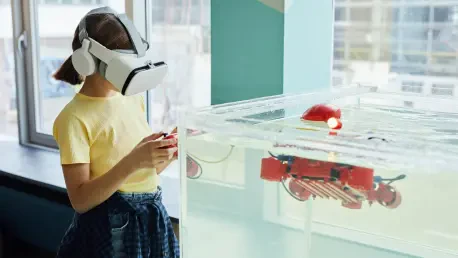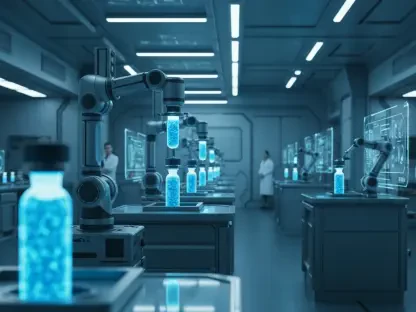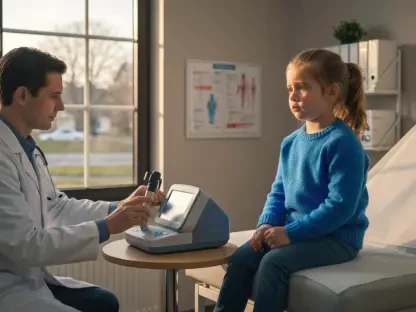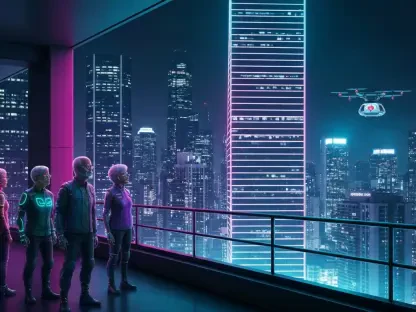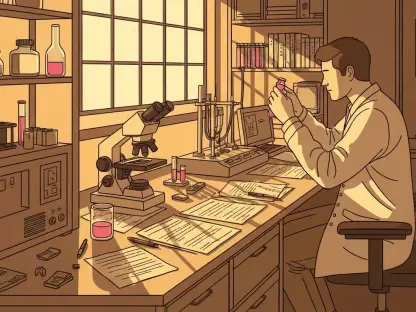In recent years, the field of robotics has witnessed a paradigm shift, moving from traditional control techniques to more innovative, vision-based learning systems. This transformation is driven by groundbreaking advancements in artificial intelligence and machine learning, fundamentally changing how robots perceive, understand, and interact with their surroundings. Central to this technological evolution is the innovative concept of conferring a form of bodily self-awareness to robots, circumventing the traditional reliance on sensors and pre-programmed instructions. Spearheading this new wave is the Massachusetts Institute of Technology’s Computer Science and Artificial Intelligence Laboratory (MIT CSAIL) through its development of Neural Jacobian Fields (NJF). This forward-thinking system represents a notable departure from conventional methodologies by equipping robots to autonomously adjust to dynamic environments, leveraging visual data for optimal control.
The Shift Towards Vision-Based Robotics
Moving Beyond Traditional Sensors
Historically, robotic systems have been engineered with rigid structures, incorporating an array of embedded sensors to facilitate predictable and accurate control models. These traditional models, often paired with digital twins, are designed to simulate the robot’s physical world interactions meticulously. However, the advent of bio-inspired and soft robotics has significantly challenged these conventional methodologies. These robots typically feature deformable and non-uniform designs that render traditional sensor-based controls less effective and, at times, impractical. The real breakthrough with NJF is its ability to allow robots to construct their internal models based solely on visual observations, liberating designers from restrictions previously imposed by physical configurations and sensor requirements. This approach not only simplifies the design process but also promotes creative freedom, enabling more intricate and adaptable robotic designs.
Redefining Robotic Control
The introduction of Neural Jacobian Fields marks a critical point in the evolution of autonomous robotic control systems. NJF empowers robots to interpret and respond to environmental stimuli based on visual data alone, eliminating the need for complex embedded sensors. This innovative method fundamentally redefines how robotic systems calibrate their movements and execute tasks. By leveraging a single camera to capture and interpret movement patterns, NJF reduces the complexity and cost associated with developing robotic solutions. The resultant control system is agile and adaptable, naturally adjusting to various scenarios and unstructured environments without intricate programming. This methodology represents a substantial departure from rigidity, allowing for a more organic approach to robotic adaptation and learning.
Innovations and Implications of Neural Jacobian Fields
Autonomous Learning in Robotics
Neural Jacobian Fields embody a fusion of state-of-the-art machine learning techniques with traditional robotic control. At its core, NJF harnesses the power of neural networks, extending concepts like neural radiance fields (NeRF) to model and understand a robot’s kinematics visually rather than mechanically. The system builds an internal model that captures the relationship between a robot’s geometry and its control responses. Through random motion exercises monitored by cameras, the neural network learns how different motor commands correlate with bodily movements. This autonomous learning process eliminates the dependency on pre-existing structural information and the need for extensive human intervention, advancing the potential for self-aware robotic systems.
Real-World Applications and Challenges
The potential applications for NJF extend beyond controlled environments into practical, everyday scenarios. In agriculture, for instance, robots equipped with NJF could perform precision localization tasks essential for crop management. Similarly, on construction sites, where unpredictable topographies and rapidly changing conditions prevail, vision-based robotic systems could navigate and function effectively without the extensive sensor-based setups. Additionally, within complex, dynamic settings like warehouses, NJF could provide significant advantages over traditional robotics by offering more accurate positioning and maneuverability in cluttered spaces. However, despite its promising prospects, current NJF implementations do face limitations, such as a lack of generalized adaptability across various robot types and the absence of tactile sensing, which can hinder tasks requiring direct contact.
Future Directions and Collaborative Efforts
Overcoming Current Limitations
Addressing the limitations of the NJF system is a priority for researchers aiming to push the boundaries of robotic capabilities further. Future developments focus on enhancing NJF’s generalization abilities across diverse robotic forms and functionalities. Moreover, integrating tactile sensing could overcome current constraints, allowing robots to engage more effectively in tasks necessitating physical interaction. As NJF continues to evolve, emphasis will also be placed on improving its spatial reasoning and temporal understanding, supporting more complex and nuanced robotic engagements. Addressing these challenges is a substantial focus for MIT CSAIL researchers, striving to cultivate a more versatile and intuitive learning system for robotics.
The Role of Collaboration in Advancing Robotics
The progression of NJF underlines the significance of interdisciplinary collaboration in advancing robotic technology. By merging expertise from computer vision, machine learning, and soft robotics, this research exemplifies the benefits of integrating diverse scientific domains. Collaborative efforts are essential for refining and scaling vision-based learning systems, ensuring these innovations meet the multifaceted demands of practical applications. Supported by various research funds and organizations, the mission to enhance robotic adaptability and functionality continues to accelerate.
A New Age of Autonomous Robotics
Neural Jacobian Fields represent a cutting-edge blend of advanced machine learning methodologies with classic robotic control. The heart of NJF lies in leveraging the capabilities of neural networks, expanding upon ideas similar to neural radiance fields (NeRF) to interpret a robot’s motion and structure through visual data rather than traditional mechanical models. This innovative approach enables the creation of an internal framework that deciphers links between a robot’s shape and how it reacts to control inputs. By observing the robot during random movements captured by cameras, the neural network develops an understanding of how specific motor instructions relate to actual physical movement. This self-guided learning process eradicates the necessity for pre-existing design data or significant human involvement. As a result, it paves the way for more autonomous and self-aware robotic systems, which could transform the future of robotics by enhancing their ability to adapt and respond to new environments with minimal supervision.
